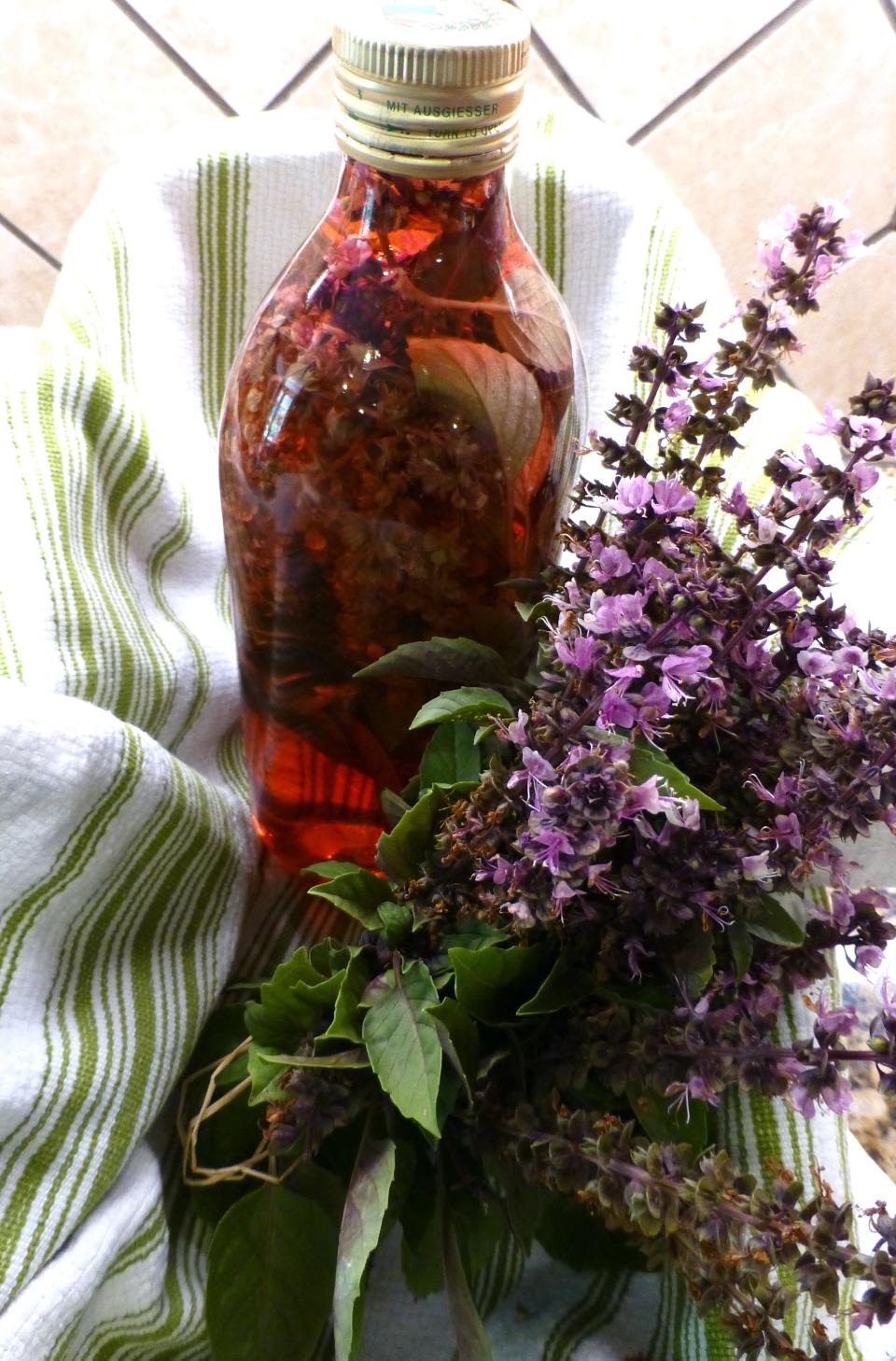Gardening for You: Preserve summer’s basil in herbal vinega
Gardeners are like the proverbial ant who gathers its harvest in the summer and stores it for the winter. We don’t want to see anything go to waste; testimonials are the many books, columns, recipes and advice on maximizing our crops.

Herbs are favorites for saving for future culinary uses: snipped fresh for seasoning or made into pesto; dried or frozen; infused in oils; made into butter, jams, jellies, and syrup.
For salad lovers, herbal vinegars are top on the list and basil makes a delicious herbal vinegar.
Basil herbal vinegar is a winner for the many distinctive flavors of the different varieties. Specialized molecules known as volatile organic compounds (VOCs) give basil (and other herbs) unique flavor and aroma profiles. There are dozens of varieties of basil: a few are sweet (common) basils with large, lush green, glossy, cupped leaves; lemon basils with lemony, citrusy aromas and taste; cinnamon basils, cinnamon flavor; Italian basils reminiscent of anise; Thai basils, spicy anise/clove flavor, others spicy licorice flavor; purple or red basils of variegated of various shades of purple leaves with robust flavors.

The unique VOCs and flavor profiles of the different basils can be preserved in herbal vinegars, each with its unique taste. Basil herbal vinegar is easy to make.
Steps to make herbal vinegar:
Harvest from personally grown herbs or from sources that are 100% pesticide free.
Select fresh foliage beginning to blossom. Plant parts with highest concentrations of volatile oils and aromatic compounds are leafy tops that have shifted to the flowering stage. Leaves at this stage are at peak flavor; the tiny blossoms are attractive in vinegars.
Harvest early in the day. Maximize VOCs by harvesting early in the day, avoiding high light intensity and heat. As plants warm, transpiration increases and organic aromatics, oils and other molecules volatize, becoming gaseous and are lost to the atmosphere.
Prepare glass bottles. The bottle is not all that critical but this is a chance to recycle glass bottles that otherwise would be discarded; wine bottles are common as they are tall and have clear glass, used vinegar or salad dressing bottles are a good size, but any decorative glass bottle will work. Wash well with soapy water and dry.
Judge the size of the bottle, harvest ample foliage. Cut stems to fit the length of the bottle. Leaves tend to migrate to the top of the liquid; herbs the length of the bottle make a more attractive presentation.
Gently swish foliage in cool water to remove dirt and dislodge insects. Discard water and repeat. Lay on newspaper and tenderly blot excess water.
Place herbs in bottles; pack tightly.
Decant vinegar into bottles; white distilled, champagne, rice will not distort the flavor.
Secure top tightly and place in hot sun to fully diffuse VOCs and color compounds.
Store away from bright sun.
Enjoy a calorie-free, fresh salad.
Ellen Peffley taught horticulture at the college level for 28 years, 25 of those at Texas Tech, during which time she developed two onion varieties. She is now the sole proprietor of From the Garden, a market garden farmette. You can email her at gardens@suddenlink.net
This article originally appeared on Lubbock Avalanche-Journal: Gardening for You: Preserve summer’s basil in herbal vinega

